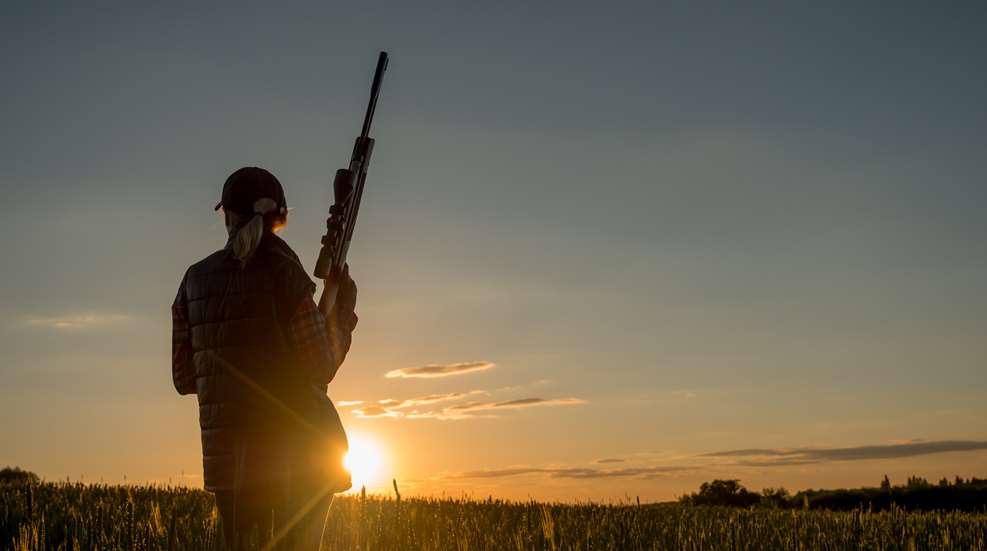
Although more and more women are taking up gun ownership every year, the percentage of us that also hunts is growing much more slowly. There are many reasons for this—some of which we can change and some we can’t—but I’ve always suspected that a primary reason some women are reluctant to explore hunting is that they’ve heard so many things about it that simply aren’t so. Sadly, a lot of the discourse about what hunting is and why we do it has been controlled by people who have never hunted and get all of their “information” about it from popular media … the creators of which have also never hunted. Here are four of the biggest cultural myths about hunting, all of which need to go away, already.
Hunters Don’t Respect Their Game
It’s difficult to say for sure where this one came from. The temptation is to blame it on Saturday-morning cartoons (It’s Wabbit Season!), but one working hypothesis stems from the fact that most modern urbanites have little to no familiarity with how meat goes from being part of an animal to part of their dinner. So when they see an image of a whitetail deer being hung upside-down from a gambrel in someone’s side yard, they see something “gross” or “disrespectful to the animal”—they don’t see that properly cooling the meat is a vital part of ensuring that the meat is both safe to eat and tasty. In that manner, it’s possible for an uninformed person to think that preparing a harvested animal for consumption is something very different from what it really is, a mark of great respect for the animal—by ensuring that its meat won’t go to waste. Speaking of which, that brings us to Myth #2!
If You Don’t Eat the Meat, You’re Unethical
I’ll start with the caveat that yes, absolutely, we should all do anything we can do to ensure that our harvested game is respectfully consumed when possible. However, there are some commonly hunted critters that are usually not eaten…as well as some circumstances under which a normally edible animal won’t be. It’s usually a matter of food safety, not picky palates. (Here’s a not-so-secret secret for picky palates: When in doubt, use your gamy-tasting but edible meat to make chili.)
For example, prairie dogs are a common game animal in the American West. However, it’s really a pretty bad idea to even take a picture next to your prairie dog, let alone eat it. Prairie dogs carry a bacterium that’s known as Yersinia pestis these days. Back in the Middle Ages, they called it the Black Death. Bubonic plague is a lot more treatable than it was back then, but there’s just something about the name “Black Death” that kills my appetite.
Another example would be for a hunter that takes a game animal that should have been good eating … only to discover during the field-dressing or butchering process that the animal is showing signs of disease that could spread to the hunter.
By the way, visible parasites such as worms aren’t necessarily a reason to not eat the meat. Both wild hogs and bears are commonly infested with parasites, but thorough cooking at the recommended temperatures will render that meat safe.
Hunters Only Care About Trophies
This one is also going to start with a caveat: Yes, hunters generally do care about trophies—antlers, turkey fans, horns and so on—but we don’t care about them to the exclusion of much else. What’s more, when we do things like mount a deer’s antlers on our wall, we’re doing that out of respect for the life of the animal we harvested to get them, and as a memento of our hunt.
That’s because, much like traveling, hunting is just as much about the journey as it is the destination. It’s exciting and unpredictable, with emotional highs and lows, long stretches of silence punctuated by bursts of adrenaline. There are no guarantees of success; although skill and equipment are important, a lot of it is just plain luck. It’s sport, but it’s also deeply contemplative, and every trip into the field is another chance to experience Nature up close, the way our ancient ancestors did.
That leads us to today’s fourth myth …
There’s No Sport in Modern Hunting
This particular canard is probably the most insulting to hunters, and sadly that’s not an accident. As our friends at the Hunter’s Leadership Forum have reported, there’s a well-funded and concerted effort to end the sport of hunting. Part of the strategy is to libel modern hunting as deeply unfair to the animals—as opposed to the way humans hunted before modern firearms, ammunition and optics.
As someone who has gone home empty-handed more often than not, I’m here to tell you that rifles, ballistic apps and high-quality glass are as close as we’ll ever get to making hunting “fair.” Compared to the whitetail deer you saw eating your tomato plants yesterday, human beings are at a very serious disadvantage. Whitetail deer run 30-35 mph; whitetail deer can clear an 8-foot fence in a single effortless leap; whitetail deer can smell human scent up to a mile away and have ears to make SETI weep with envy.
Although modern hunting is indeed sporting, many hunters do prefer to use older methods—especially as their skills and interests evolve. Archery hunting, hunting with muzzleloaders, even atlatls…all of them have dedicated hunting fans.
Don’t be ashamed if any of these myths ever had you fooled—all we ask is that you keep an open mind the next time you hear about hunting. If you’d like to try it yourself, we can help you with that too!















































